Why you can trust Tom's Hardware
In looking at the 1080p medium results, we can see the VRAM limits don’t come into play here. Both RX 5500 XT cards are able to reach 60 fps or a lot more with most games able to run at 100 fps-plus. The Gigabyte card traded blows with the Sapphire using medium settings. which makes sense since we are not eclipsing the VRAM capacity of the 4GB card.
When looking at the GTX 1650 Super using these settings, the Gigabyte card managed to perform faster in 8 of 11 games, averaging four fps more or around 5% better overall. If we compare it to the GTX 1660 that card is around 6% faster, averaging around 5 fps more.
For 1080p medium settings, the RX 5500 XT puts up a good fight and compares well with the GTX 1650 Super. But the performance-per-dollar win goes to the GTX 1660, as it’s faster for a similar price.
The Division 2
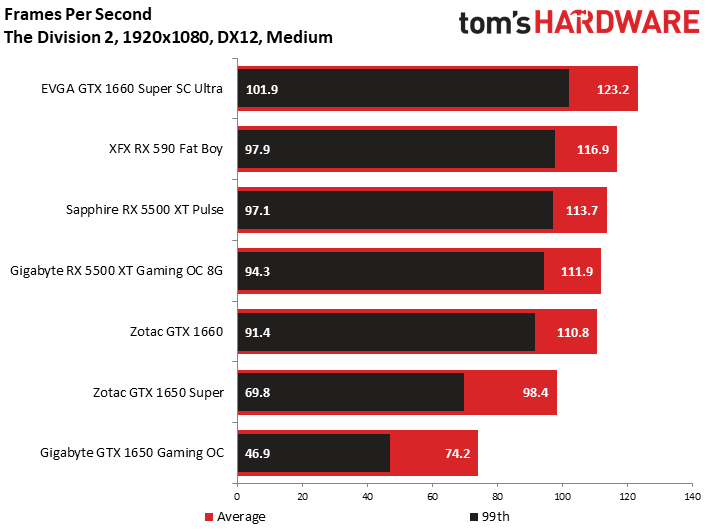
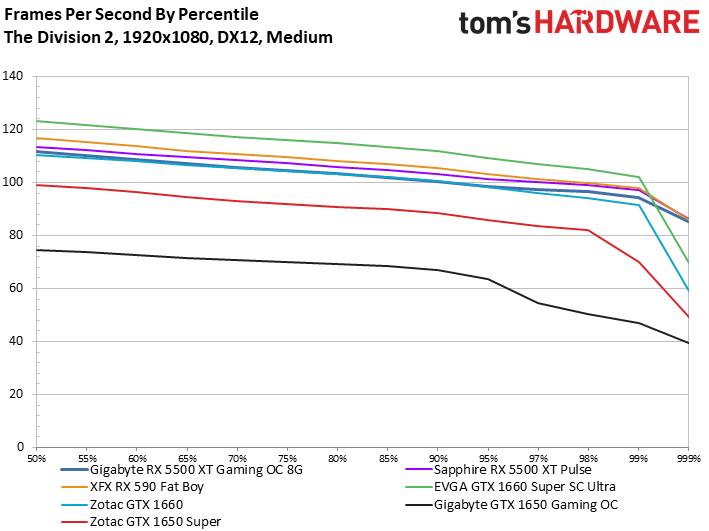
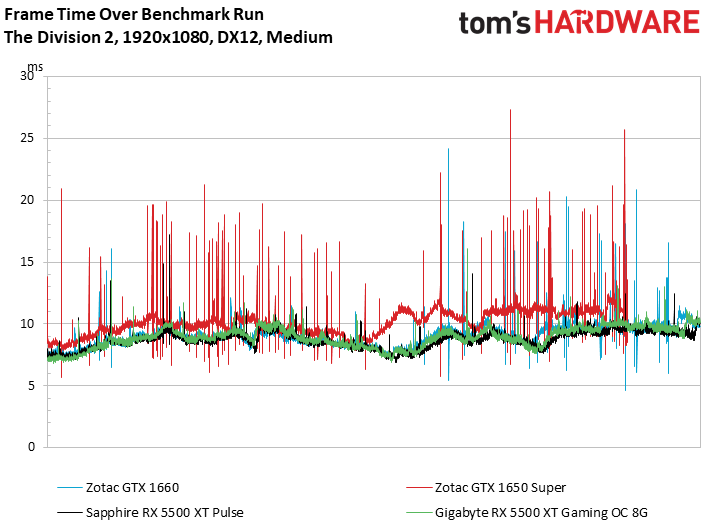
Ghost Recon: Breakpoint
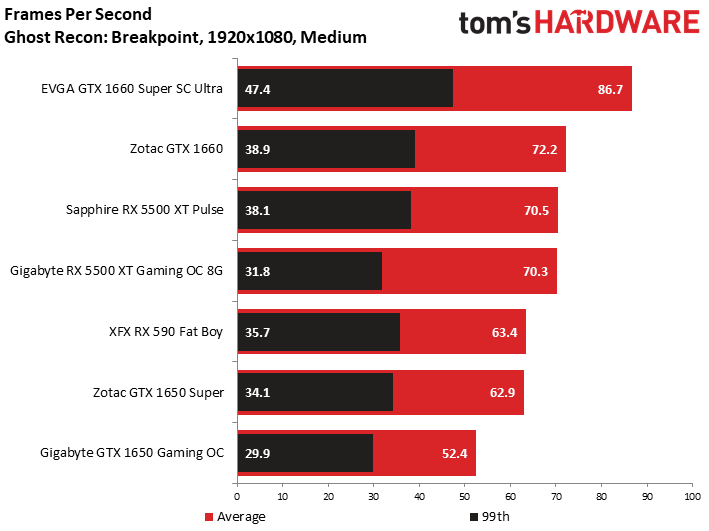
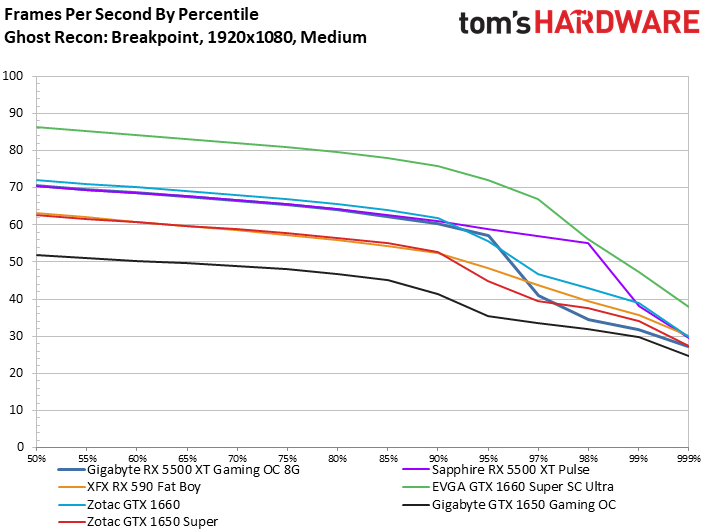
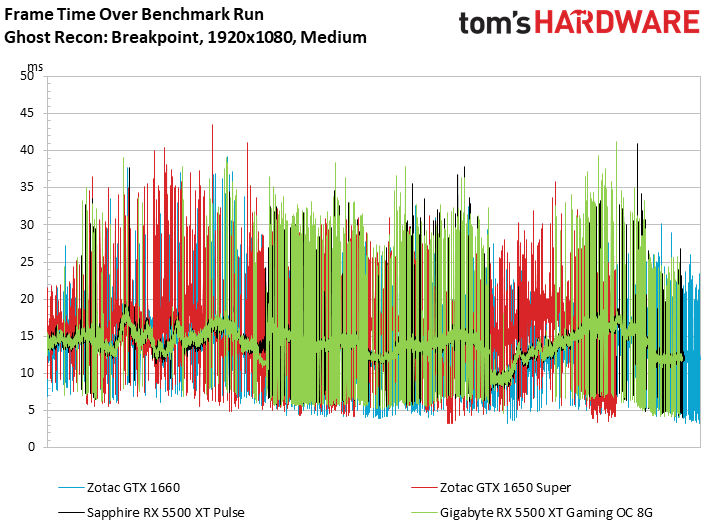
Borderlands 3
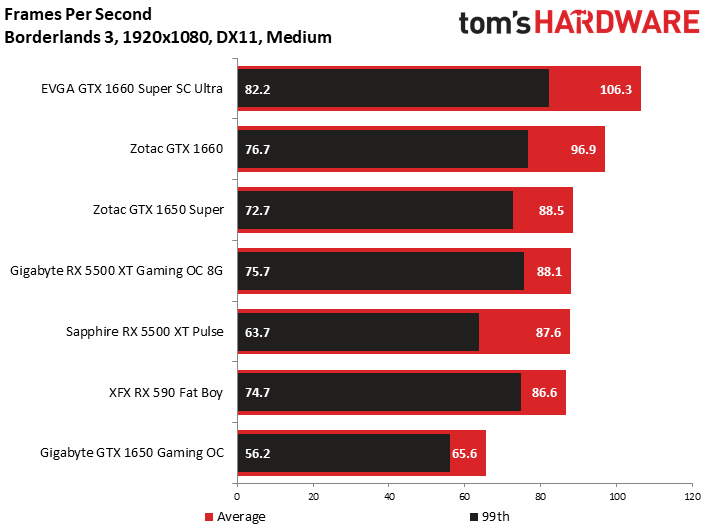

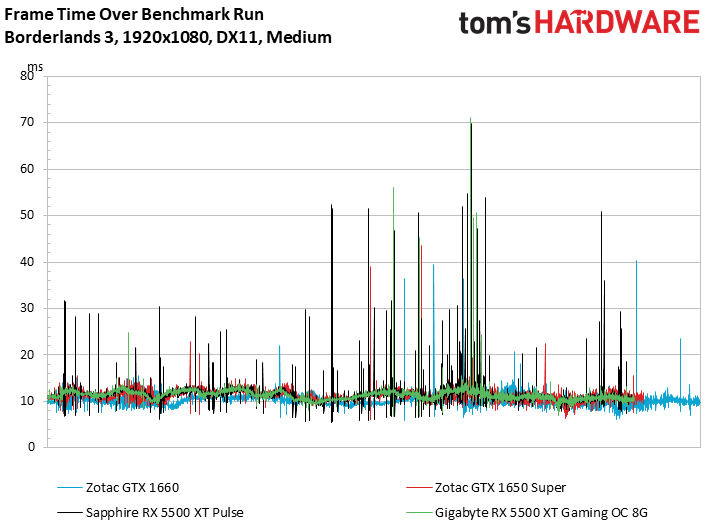
Gears of War 5
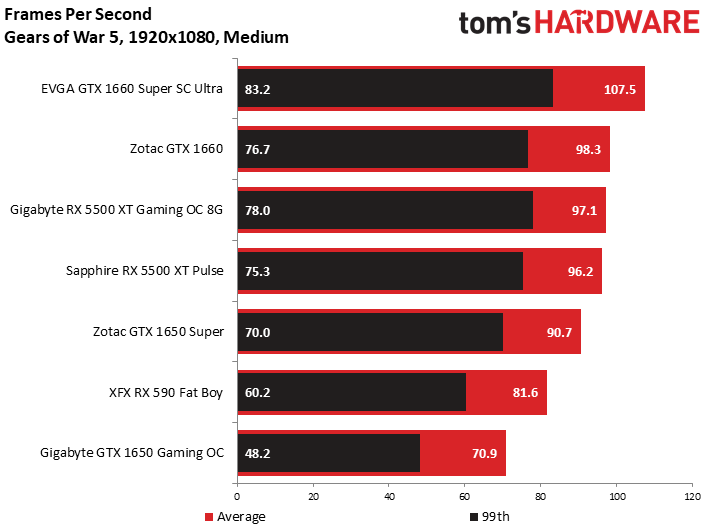
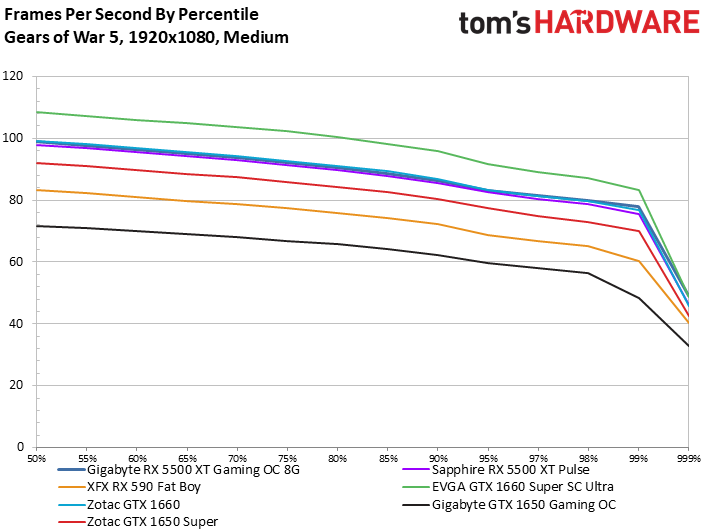
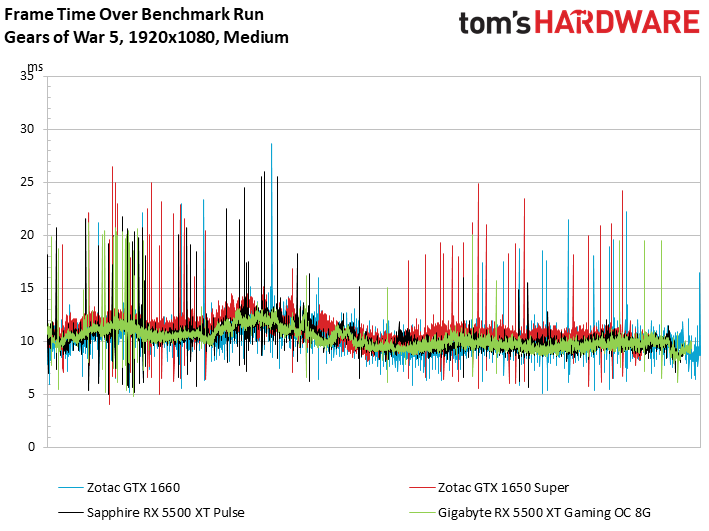
Strange Brigade
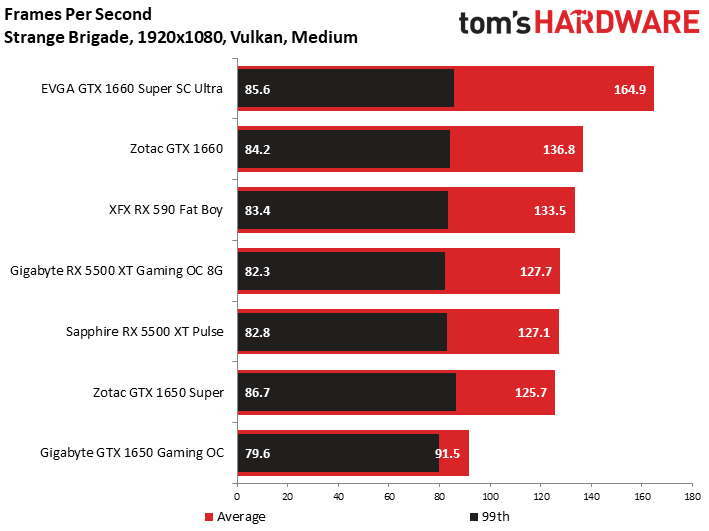
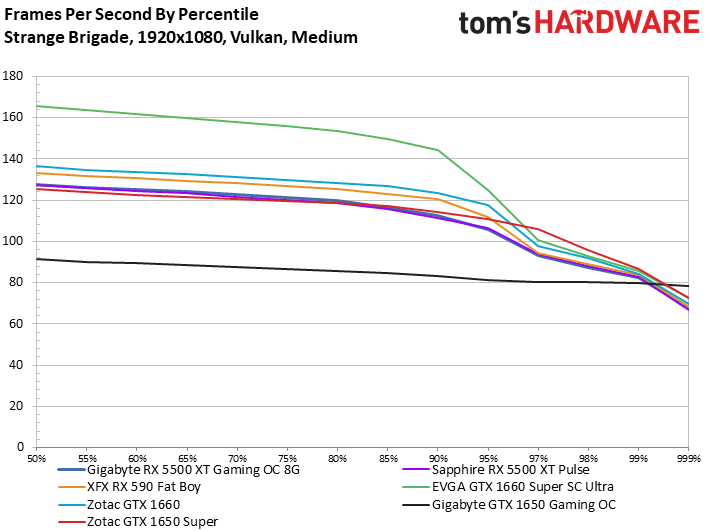
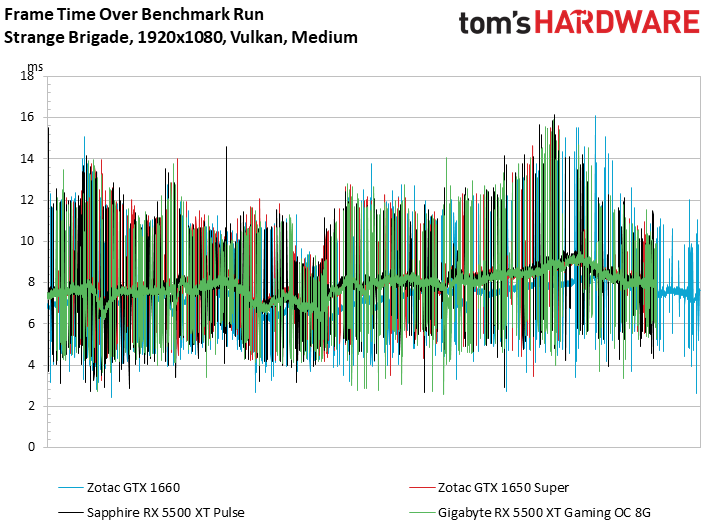
Shadow of the Tomb Raider
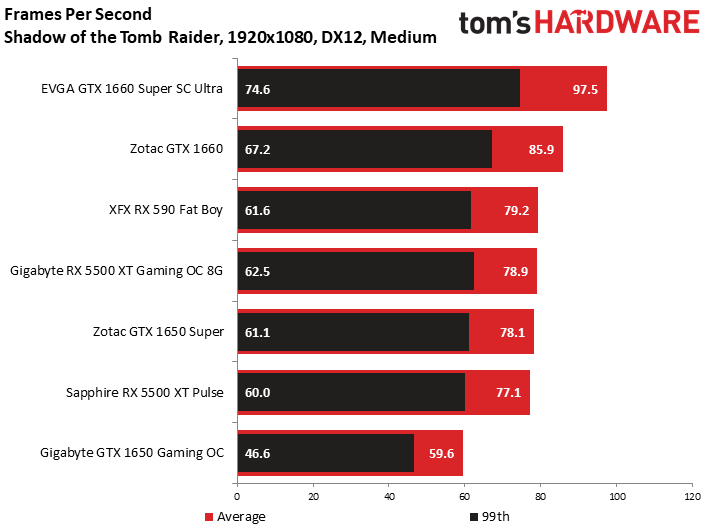

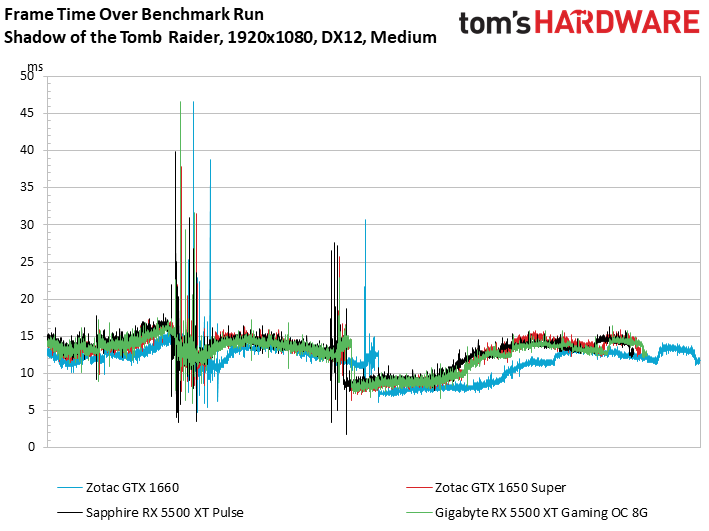
Far Cry 5
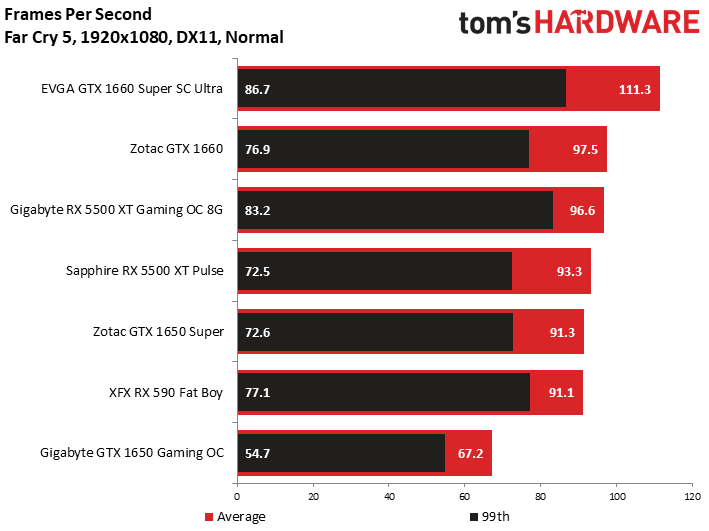
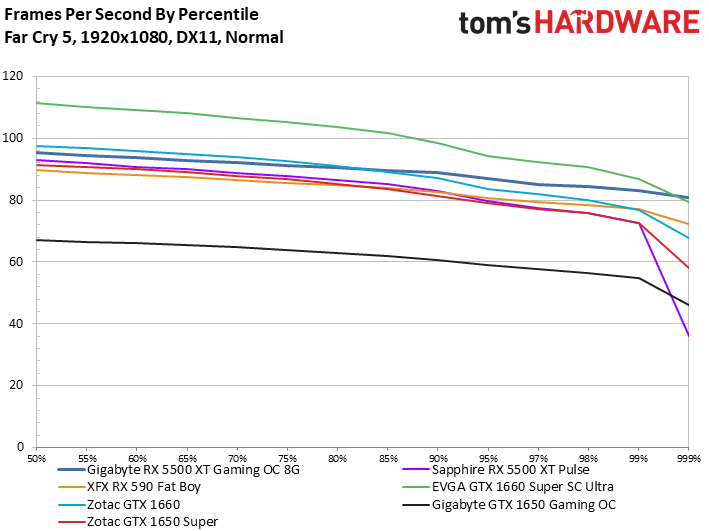
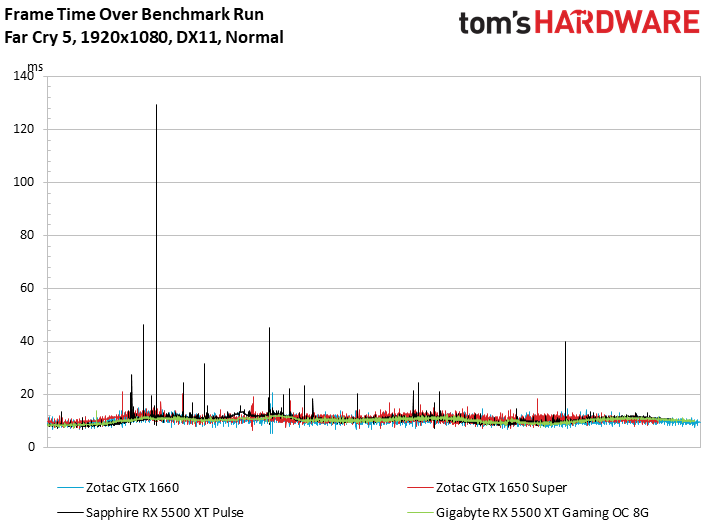
Metro Exodus
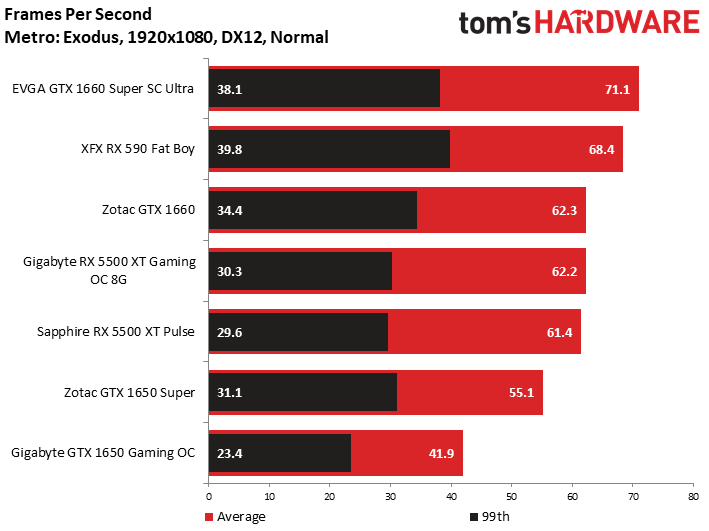
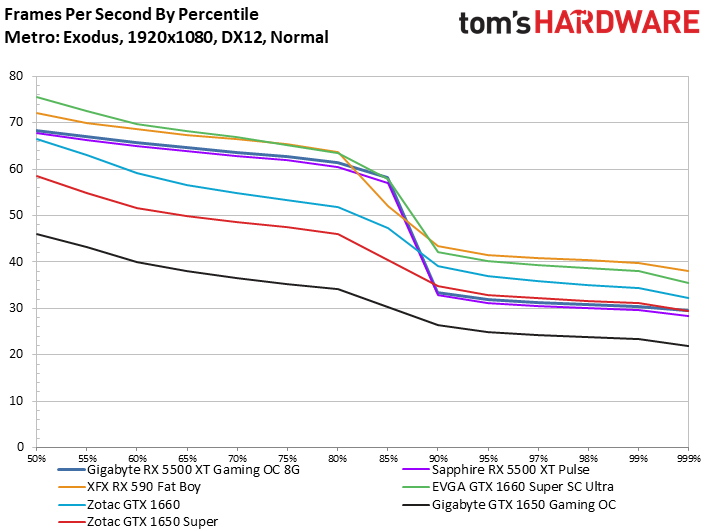
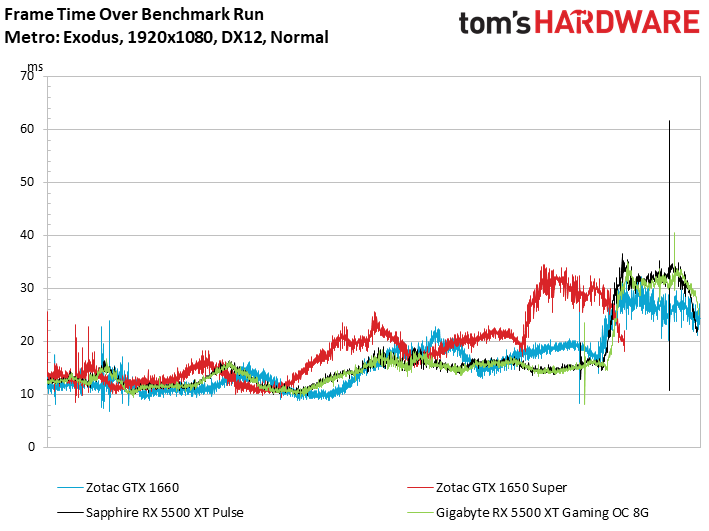
Final Fantasy XIV
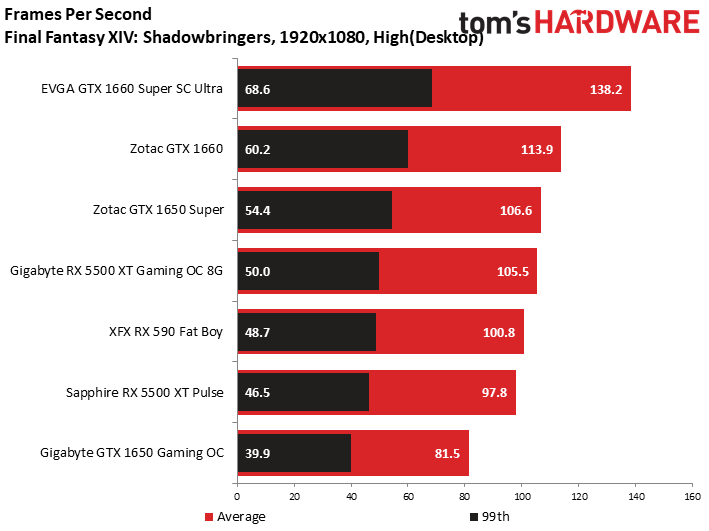
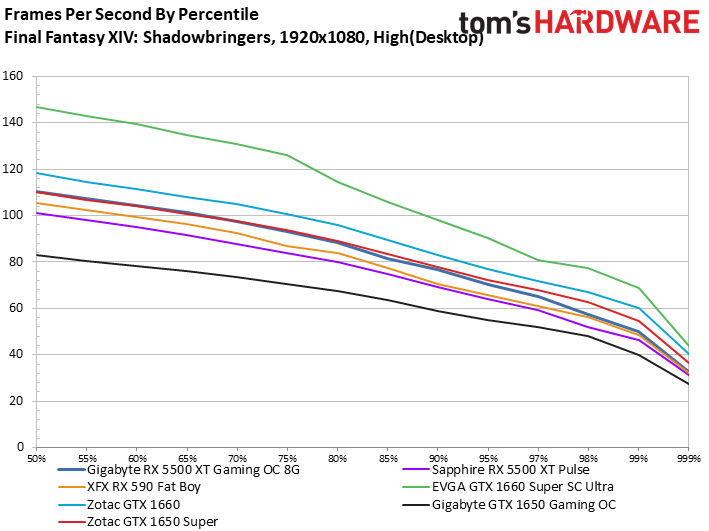
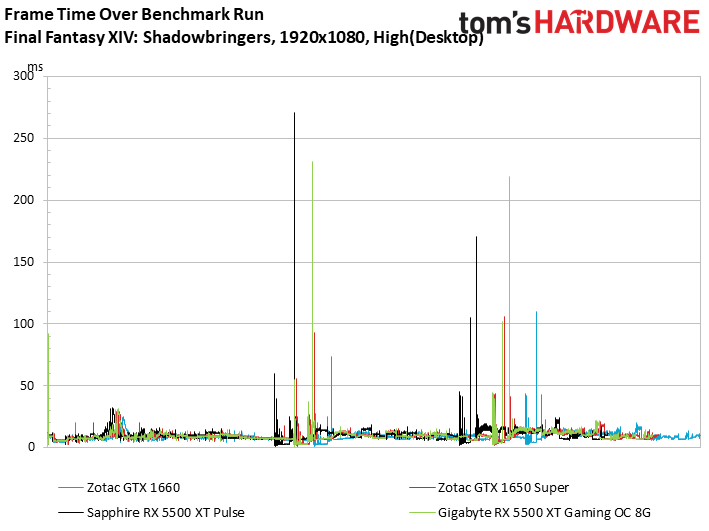
Forza Horizon 4
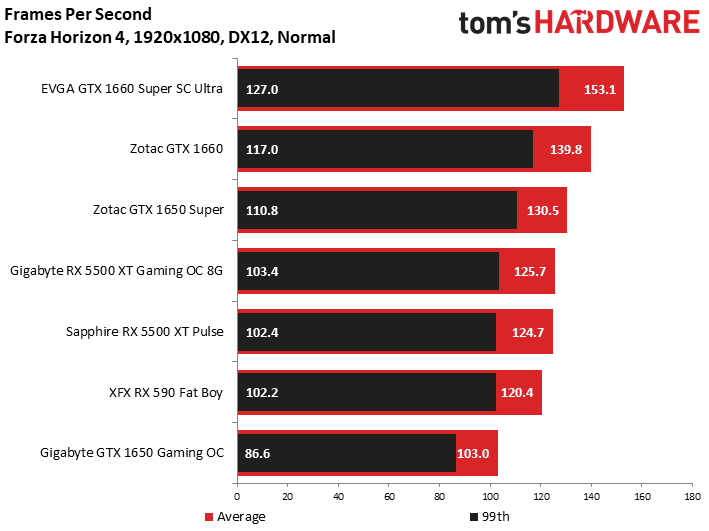
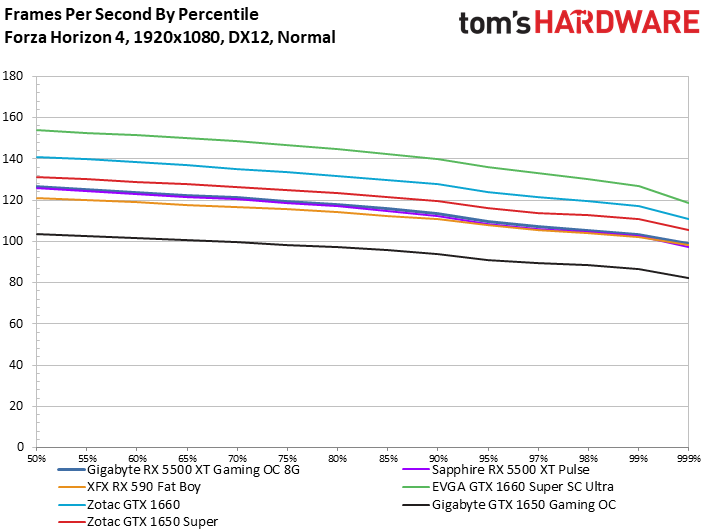
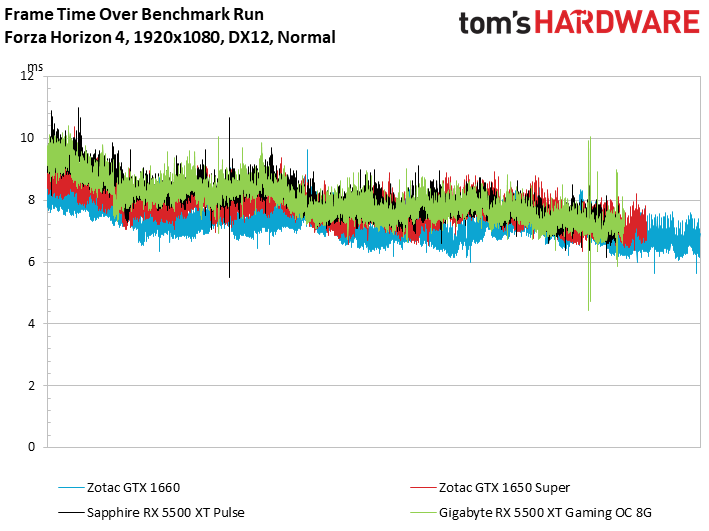
Battlefield V
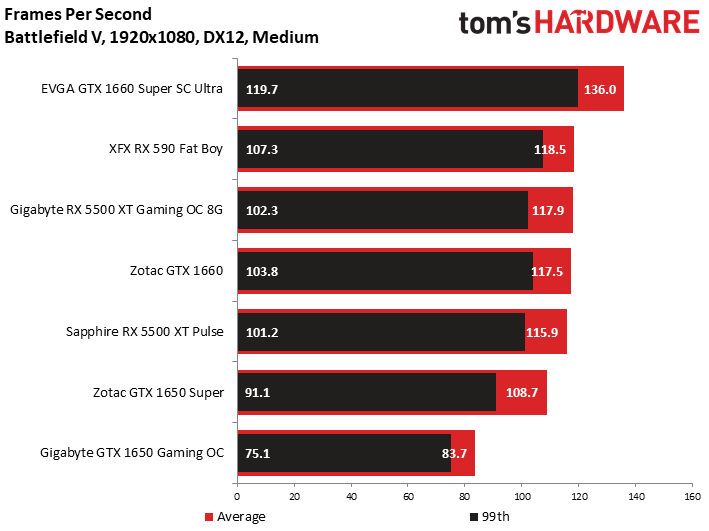
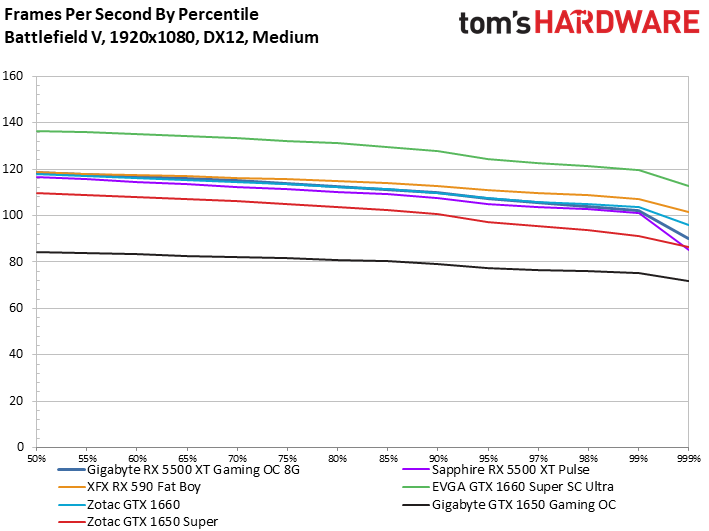
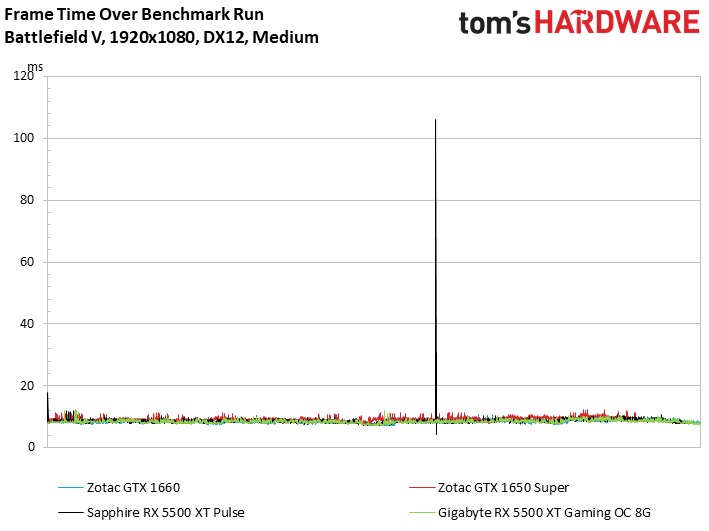
MORE: Best Graphics Cards
MORE: Desktop GPU Performance Hierarchy Table
MORE: All Graphics Content
Get Tom's Hardware's best news and in-depth reviews, straight to your inbox.
Current page: Performance Results: 1920 x 1080 (Medium)
Prev Page Performance Results: 1920 x 1080 (Ultra) Next Page Power Consumption, Fan Speeds, Clock Rates and Temperature
Joe Shields is a staff writer at Tom’s Hardware. He reviews motherboards and PC components.
-
larkspur ReplyThe Windforce 3 cooler has little issue keeping up with the stock power limit of this card.
Yes, obviously. That's why I'm wondering why you didn't crank up the power limit and try some overclocking. This card is begging for it. -
hannibal This card is allready near the upper limit it can get, so it is better to keep it cool and quiet than try to get some extra speed.Reply -
larkspur Reply
No not really... This particular card has an excellent huge cooler and plenty of extra thermal headroom. Look at the temp chart and power usage. The thing isn't even close to maxed-out. Overclocking is exactly why someone would spend extra on this particular card to get this little chip with such a massive oversized cooler... No reason not to at least give it a shot using AMD's own OCing tool...hannibal said:This card is allready near the upper limit it can get, so it is better to keep it cool and quiet than try to get some extra speed.
Furthermore, Igor believes that every Radeon RX 5500 XT should have no problem reaching the 2 GHz mark.
That's from: https://www.tomshardware.com/news/overclock-your-radeon-rx-5500-xt-to-21-ghz-on-air-with-this-tool -
alextheblue Reply
Yeah if you're not planning on overclocking, get a cheaper one.larkspur said:Overclocking is exactly why someone would spend extra on this particular card to get this little chip with such a massive oversized cooler... -
hannibal As we can see from 5700xt. Those huge saphire nitro, asus strix and so on cards Are not faster than much cheaper variants. They just run cooler and quieter that those expensive monster cooled versions.Reply
Same here... -
askeptic Am I the only one who read the entire article and walked away believing that Intel has the edge still?Reply
I don't agree that the AMD would need a custom water loop, but if it did that would throw the price to an absurd amount for that chip.
Intel still wins in the areas where it matters. The only time I would consider the AMD chip would be if my job was to constantly encode videos or unzip files. IE, if I were a creator. Most people are not creators. They may think they are, but they are not.
Software still favors Intel's platform as well. Maybe in 3 more years AMD would be a viable option for most at the high end, but I am just not seeing it. The size of process nodes play no role in my decision as I would never have a reason to care, I just want what is fastest for most applications, and this article leads me to believe that is Intel hands down.
For those videos I use Sony Vegas for twice a year, I guess I will have to wait 120 more seconds than normal.